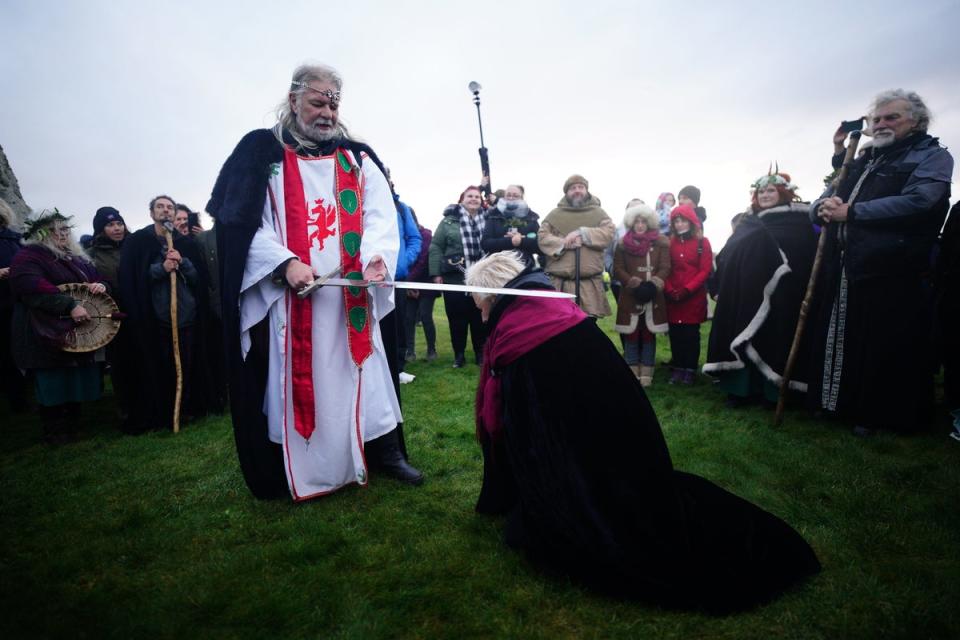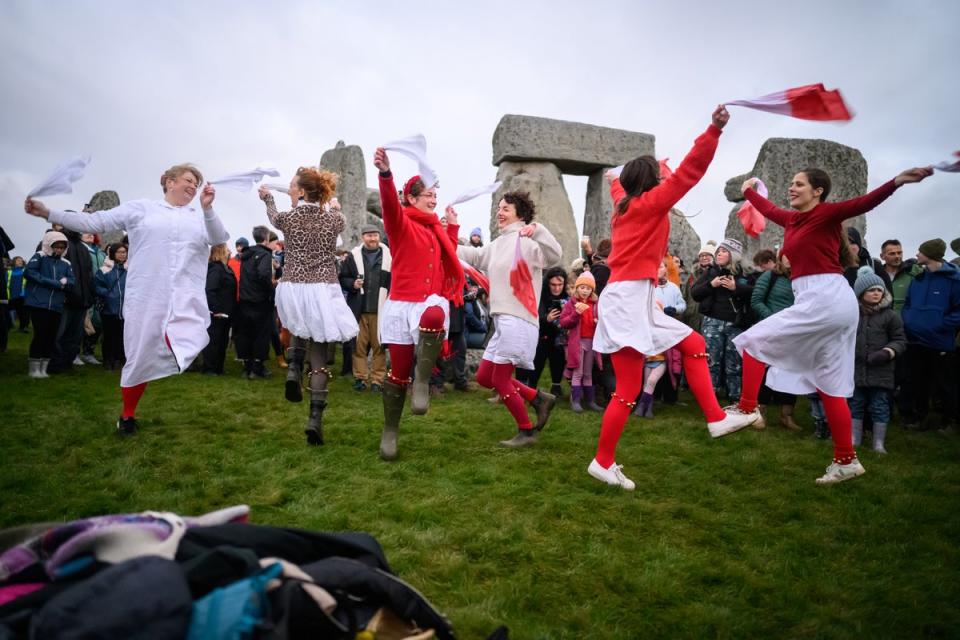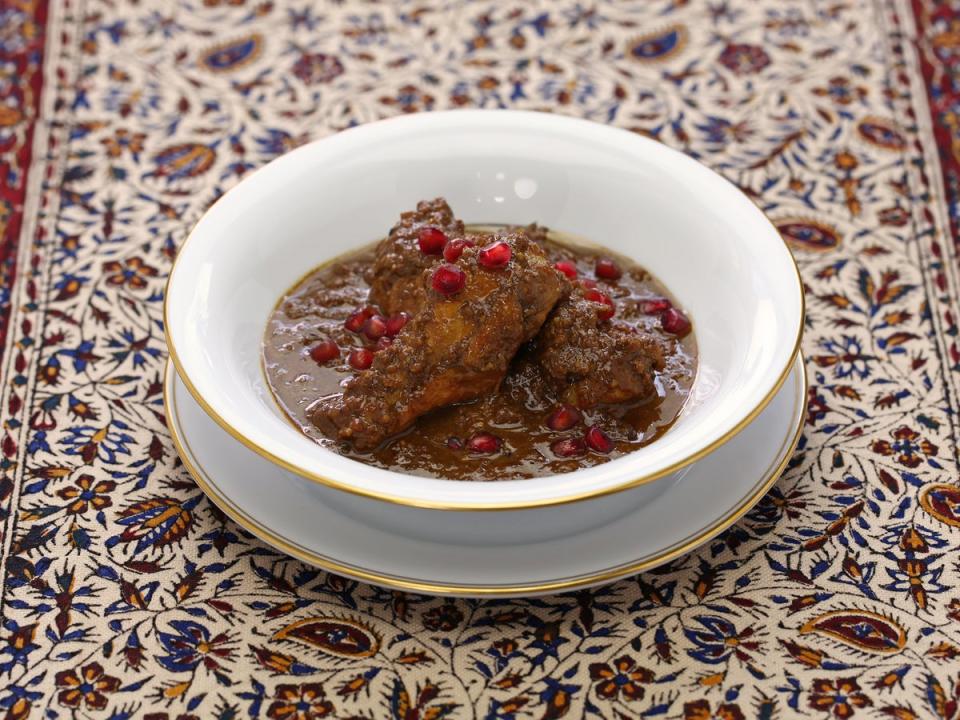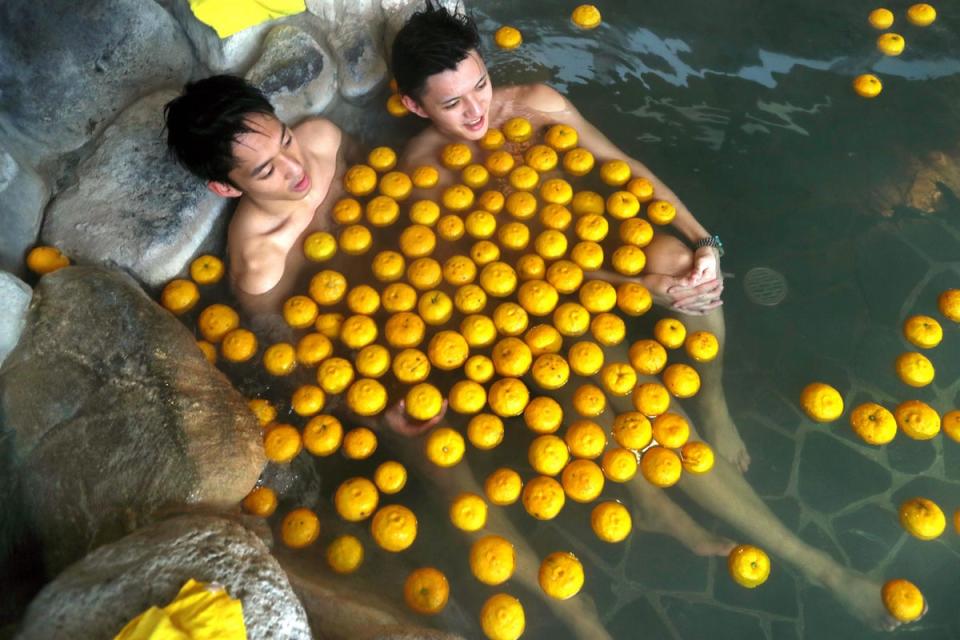Thousands gather at Stonehenge for winter solstice
Thousands of people greeted the Sun with cheers as it rose over Stonehenge for the winter solstice on Friday morning.
Those who observed the spectacle at the neolithic monument on Salisbury Plain in Wiltshire braved a blustery morning and overcast skies to catch a glimpse of the sun on the shortest day of the year.
The winter solstice marks a seasonal turning point in the northern hemisphere, after which the days grow longer and nights become shorter.
It is believed that solstices have been celebrated at Stonehenge, a monument built on the alignment of the midsummer sunrise and the midwinter sunset, for thousands of years.

Describing Friday’s “peaceful celebration” at the monument, Rebecca Eade from English Heritage, said: “It was wonderful to welcome approximately 6,000 people to Stonehenge this morning to celebrate a chilly winter solstice.
“We were delighted that a further 98,500 people watched the sunrise live online from right around the world.
“It was a peaceful celebration and despite a cloudy and blustery start, people did enjoy a bright winter solstice sunrise,” she added.

Arthur Pendragon, a man who claims he is the reincarnation of King Arthur, knighted followers during the celebrations at Stonehenge – complete with music and dance.
“It evokes the start or perhaps hope for something new, marking both an annual cycle and change – all things that draw people to the site at this time of the year,” British Museum’s World of Stonehenge exhibition curator Dr Jennifer Wexler told The Guardian.
“I think also the spirituality of the event and the site is more potent in the winter, there’s something really magical wandering across cold, misty fields in the dark and seeing lights across the landscape as people gather to celebrate the return of the light,” she added. “For me, it evokes the feeling of what it might have been like 4,000 years ago.”

For many cultures across the world, the winter solstice signifies hope, rebirth, and renewal as it marks the onset of brighter, longer days. It is celebrated across the world with different rituals, festivals, and traditions hailing the return of the sun and the promise of spring.
Winter solstice celebrations around the world
In China, the winter solstice celebration, known as Dongzhi, represents the victory of light over darkness. The word “dong” means “winter” while “zhi” stands for “arrival” as “Dongzhi” literally translates to the “coming of winter”.
Based on the Chinese philosophy of yin and yang, Dongzhi is the occasion when yin energies begin to transition into the positive energy of yang, restoring balance and harmony.
On the longest night of the year, families in China typically gather for a traditional meal, comprising dumplings, tangyuan (glutinous rice balls served with a sweet soup or savoury broth), hot pot, or wontons depending on which part of the country they’re from.
Iranians celebrate the millennia-old winter solstice festival, Yalda – meaning “birth” – with a big, hearty meal at home with their loved ones, seated around a low, square table known as a korsi.

Symbolic foods, most notably pomegranates, are passed back and forth, during an evening full of storytelling, poetry reading, laughter, singing, and fortune-telling.
The Yalda feast typically includes warming stews, rice dishes, thick Iranian soups and pomegranate-based dishes, including khoresh morgh naardooni, khoresh-e fesenjoon, and ash-e anar (pomegranate ash).
“Pomegranates originated in the region of modern-day Iran. From a religious aspect, the pomegranate is considered a heavenly fruit and perhaps the original forbidden fruit,” Iranian food historian Nader Mehravari told The Independent.
“It is also a sign of fertility, light and goodness, which is why it is so auspicious on Yalda night as a symbolic opposing force of darkness.”
Yalda, celebrated in honour of the sun god Mithra, is also observed in countries such as Afghanistan, Azerbaijan and Uzbekistan,
Traditions in Japan include taking a hot bath with yuzu, a winter citrus fruit known for its cleansing and healing properties, and eating a seasonal winter squash called kabocha, and foods that contain the “n” sound (for instance, udon), believed to bring good fortune.

The winter solstice occurred at 3.27am GMT, the moment when the Earth is most tilted away from the sun, according to Royal Observatory Greenwich. From this point on, days will incrementally become longer until the longest day of the year, the summer solstice, dawns six months later in June.
The date of the equinoxes and solstices varies because the Gregorian calendar does not exactly match the length of the tropical year – the time it takes the Earth to complete an orbit around the sun.
To realign the calendar with the tropical year, a leap day is introduced every four years and when this happens, the equinox and solstice dates shift back to December 21 and June 21.

